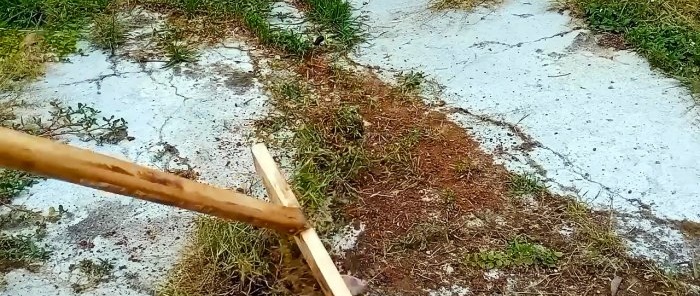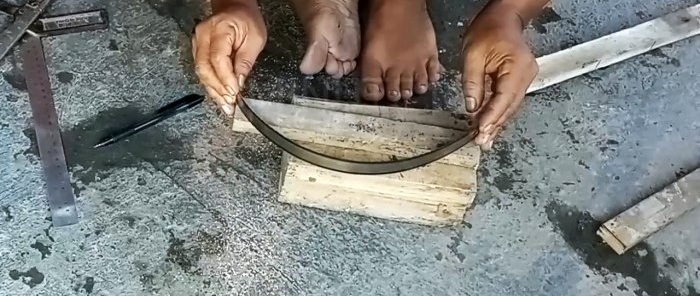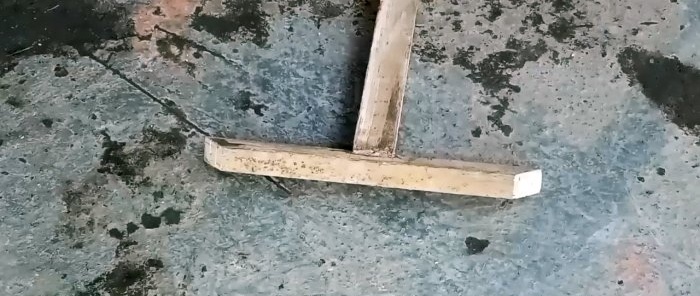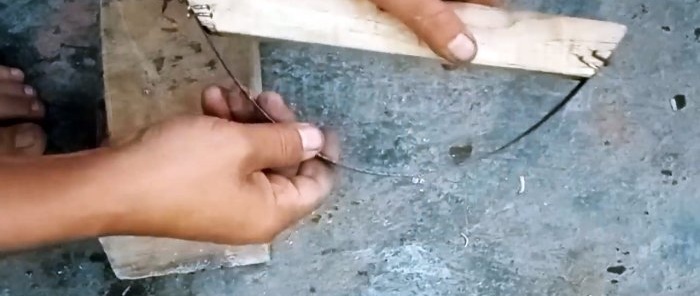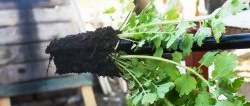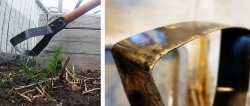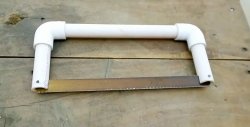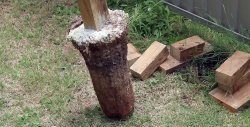Such a simple and unpretentious tool will be completely useful in the home or farm. Moreover, its production does not require scarce or expensive materials or special tools. Any adult can do it and does not require any special knowledge or professional experience.
How to Make a Handy Weed Remover from an Old Hacksaw Blade
After marking, we cut a workpiece from an old wooden block, commensurate in length with the hacksaw blade in a bent position along a pre-selected bending radius. We cut the ends of the blank from the bar at an equal angle in the same direction, also corresponding to the used canvas in a bent form.
On a wooden blank in the center of the long side, using a hacksaw and a chisel, we make a rectangular groove, equal in width and depth to the longer blank, which will serve as the handle of our future tool.
But such a relative arrangement of the hoe blanks will not be entirely convenient during the work process, forcing a person to bend forward.Therefore, we cut the lower end of the handle at the calculated angle and secure the second fastening option with nails, and for greater strength of the connection, we strengthen it on both sides with superglue.
We eliminate defects on the handle, round the edges, grind with sandpaper and make transverse notches along the length with a certain step for a more convenient and reliable holding of the tool in the hands during the working process.
Along the length of the oblique cuts on the transverse workpiece, we make recesses to secure the ends of the bent hacksaw blade in them. To stabilize the shoulders of these small recesses, we soak them generously with superglue.
We sharpen one side of the old hacksaw blade using a metal file, since it is this side that will be working when using our future hoe.
We place the curved sheet on the transverse workpiece, placing its ends in the recesses and firmly securing it with screws.
If the blade becomes dull, it can be removed and sharpened again using, for example, a sharpening stone. To securely fasten the blade to the transverse workpiece, we place washers with holes cut from sheet metal of appropriate sizes under the screw heads. We also additionally strengthen the hacksaw blade on the transverse workpiece using several nails.
